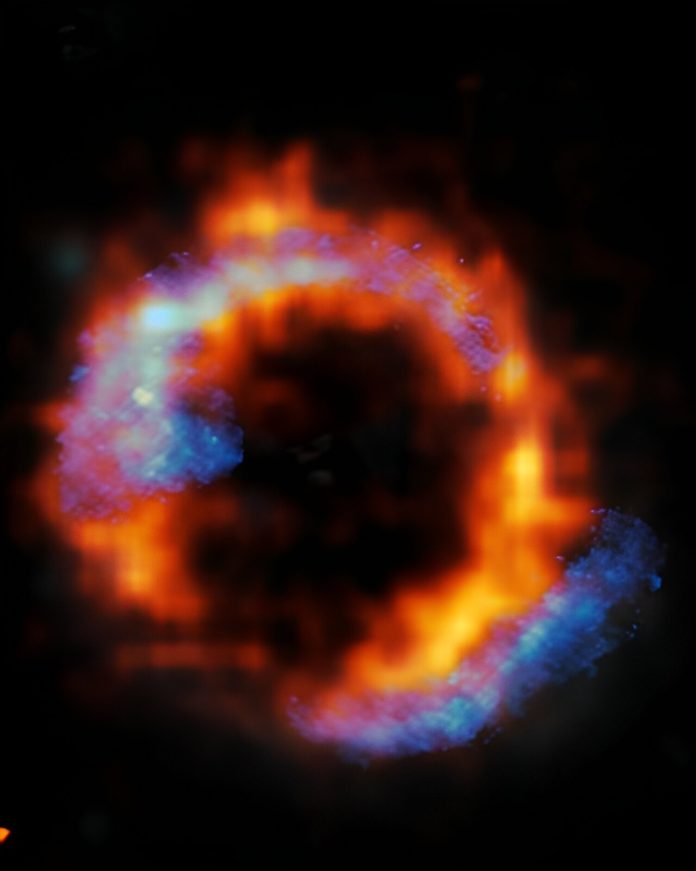
A recent discovery has provided new insights into the formation of extremely bright galaxies known as Hyper Luminous Infrared Galaxies (HyLIRGs).
These galaxies are incredibly luminous, shining 10,000 times brighter than our Milky Way in infrared light.
One such galaxy, PJ0116-24, has been captured in a new photo released by the European Southern Observatory (ESO).
The image accompanies a groundbreaking study published in Nature Astronomy that explores the formation of these galaxies.
Previously, scientists believed that the intense brightness of HyLIRGs was due to galaxy mergers.
These collisions were thought to create dense gas regions, triggering rapid star formation.
However, the new study suggests that isolated galaxies can also become HyLIRGs through internal processes, where star-forming gas is funneled toward the galaxy’s center.
The paper, titled “Detailed study of a rare hyperluminous rotating disk in an Einstein ring 10 billion years ago,” was co-authored by Cornell astronomer Amit Vishwas, Ph.D.
The research combined observations from ESO’s Very Large Telescope (VLT) and the Atacama Large Millimeter/submillimeter Array (ALMA) to analyze the motion of gas within PJ0116-24.
In the photo, ALMA traces cold gas shown in blue, while the VLT’s Enhanced Resolution Imager and Spectrograph (ERIS) traces warm gas shown in red. These observations revealed that the gas in PJ0116-24 rotates in an organized manner, rather than chaotically as expected after a galactic collision. This surprising finding indicates that mergers are not always necessary for a galaxy to become a HyLIRG.
PJ0116-24 is located so far away that its light has taken about 10 billion years to reach us. A foreground galaxy acts as a gravitational lens, bending and magnifying the light from PJ0116-24 into an Einstein ring. This cosmic alignment allows astronomers to zoom in on very distant objects, providing a level of detail that would otherwise be impossible to achieve.
Amit Vishwas, a research associate at the Cornell Center for Astrophysics and Planetary Sciences (CCAPS), contributed to mapping the emission and movement of atomic and molecular gas in PJ0116-24 using ALMA.
This data strongly supports the rotating disk scenario. Vishwas also helped gather data with the newly commissioned ERIS instrument on the VLT. The study was led by Daizhong Liu from the Max Planck Institute for Extraterrestrial Physics and the Purple Mountain Observatory.
The gas conditions and elemental abundances in PJ0116-24 are similar to those reported by Vishwas and his co-authors last year for another galaxy at an earlier epoch in the universe, using data from the James Webb Space Telescope. However, PJ0116-24 is around five times more massive and luminous than the previously studied galaxy.
“In both cases, gravitational lensing allowed us to study the details of these distant galaxies,” said Vishwas. “These new observations help us understand how galaxies evolve, efficiently converting gas to stars in rapid growth spurts followed by long periods of relative calm.”
This discovery offers a new perspective on the formation and evolution of galaxies, challenging previous beliefs and providing a clearer picture of the universe’s complex dynamics.



